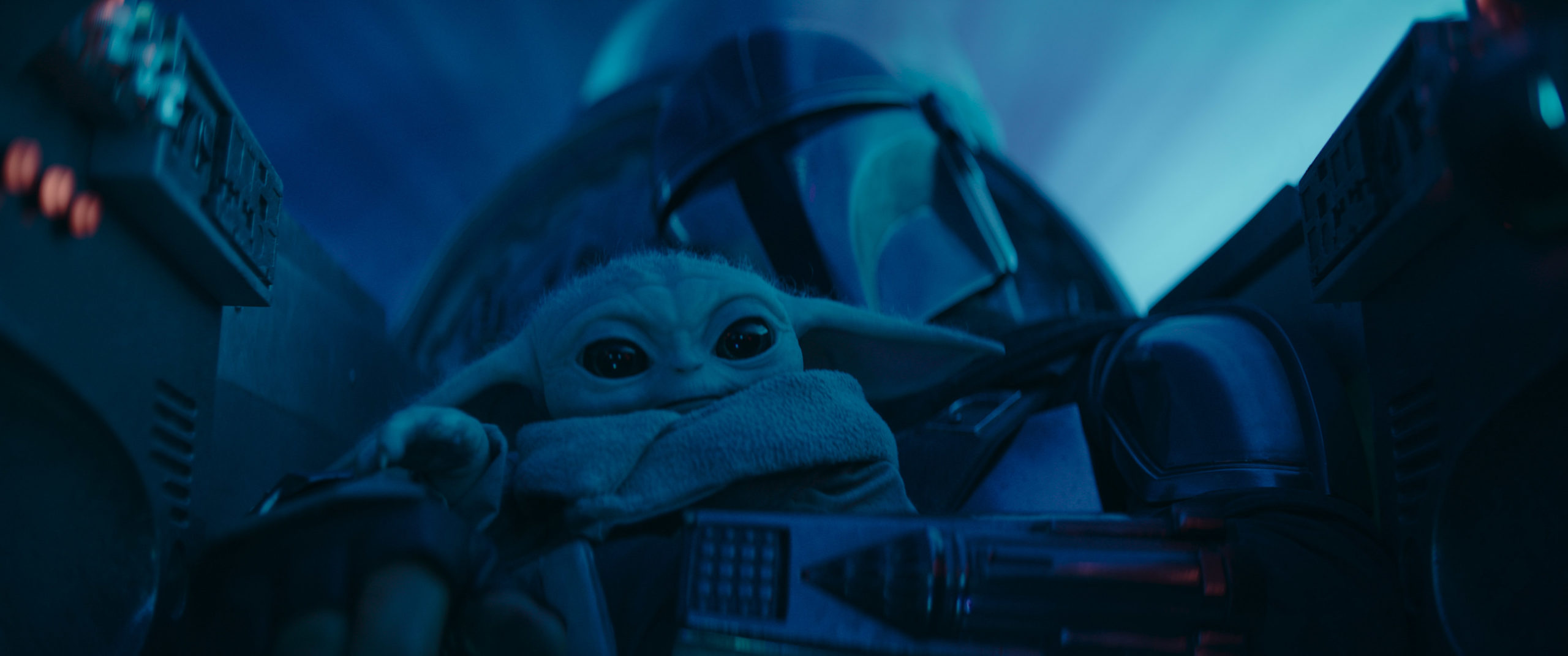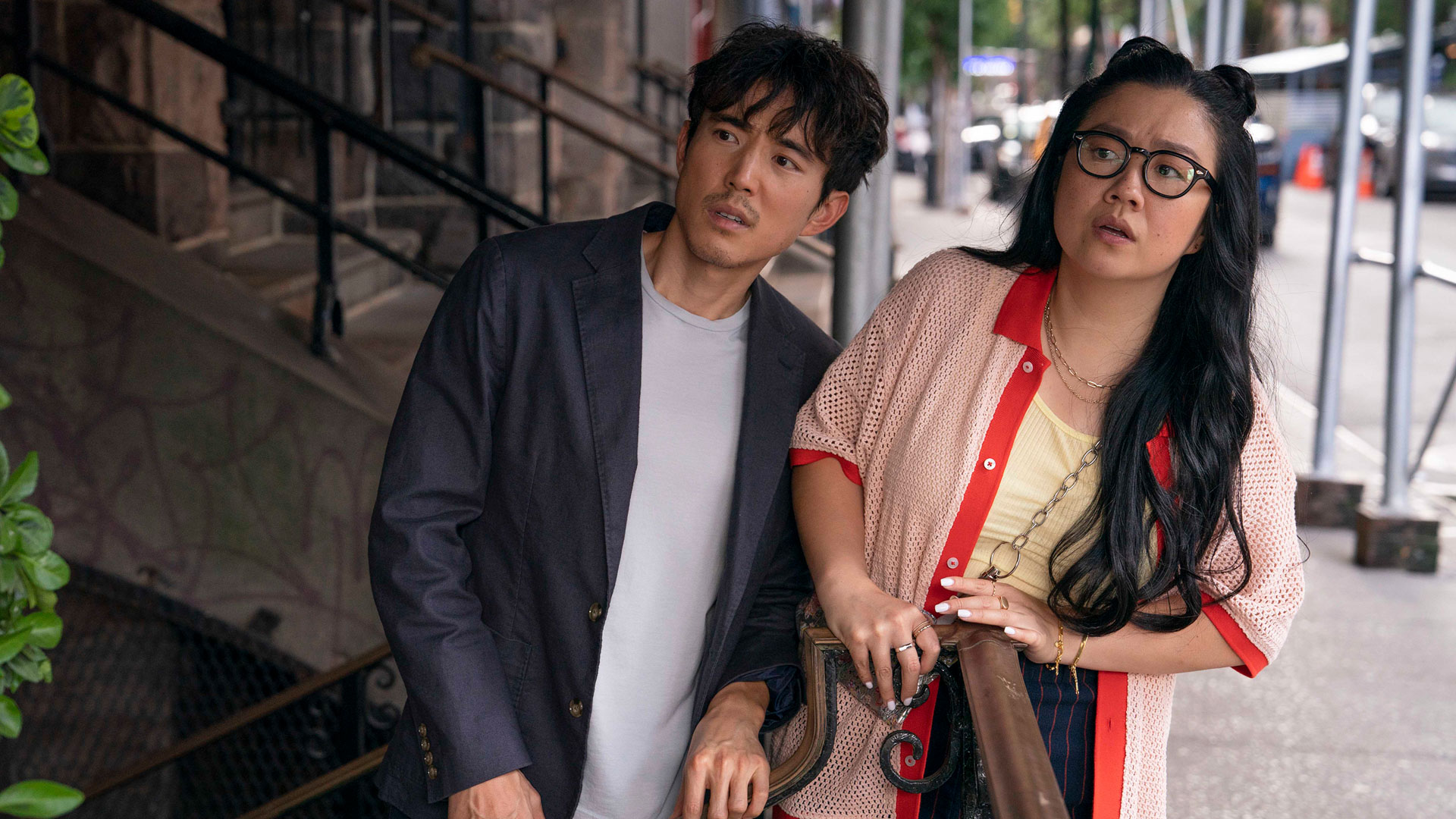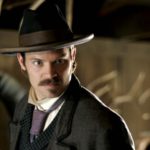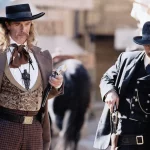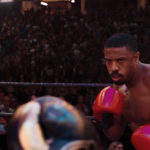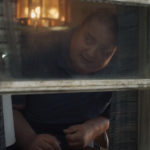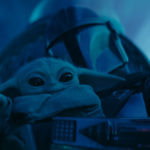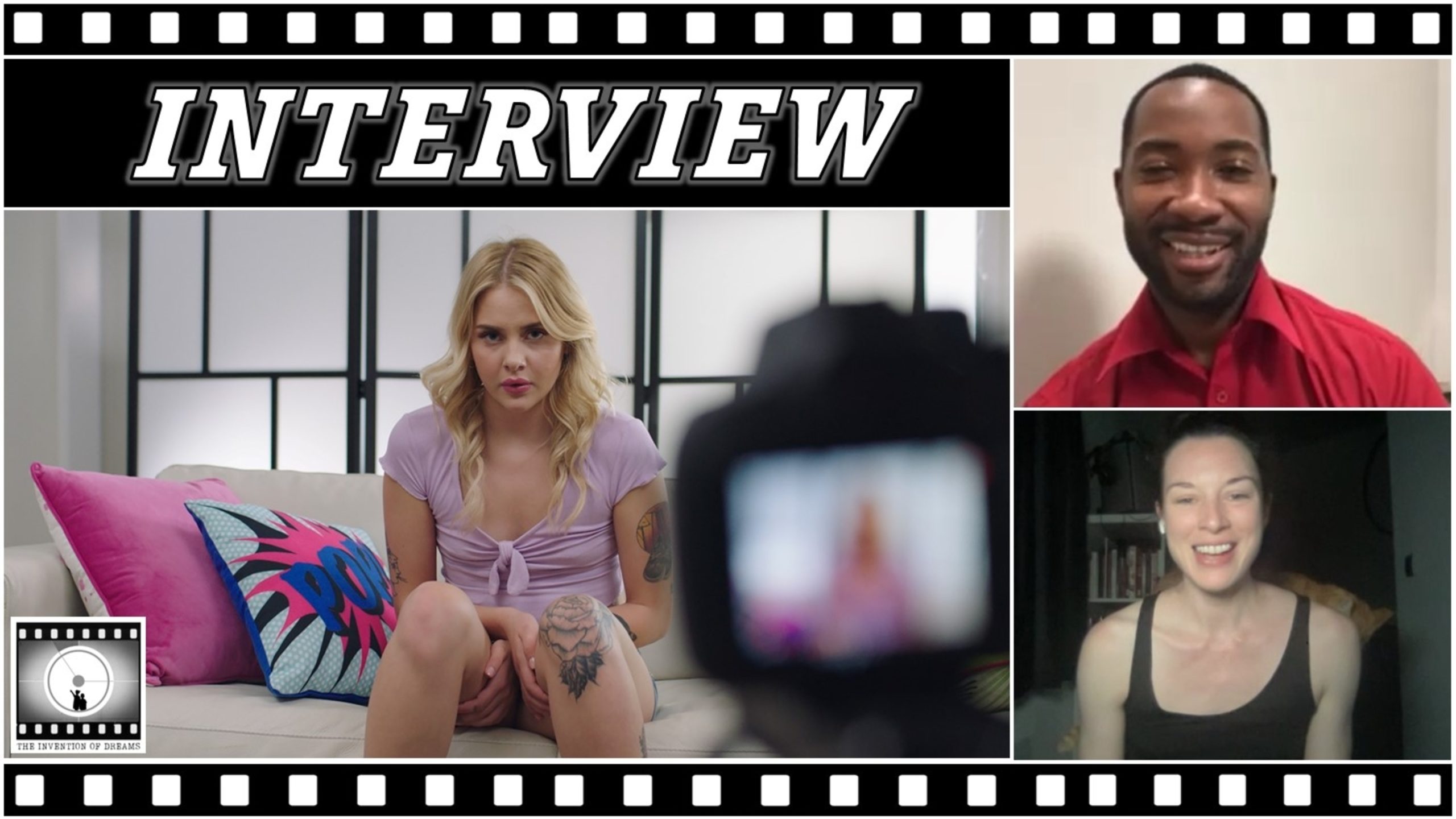
SPOILERS! This column contains discussion of the entire plot of Hawkeye, along with the entire MCU thus far.
Let’s start this discussion of the wonderful Hawkeye off with a crazy statistic. The entire Infinity Saga, so every movie Marvel released over the 12 years spanning Iron Man through Spider-Man: Far From Home, runs 2,996 minutes. In 2021 alone, Marvel has released 2,150 minutes of content. It’s a mind blowing amount of material for viewers to consume. Obviously, the pandemic contributed to this stacking of content, but the biggest culprit is Marvel’s expansion into television via Disney+.
In years past, Marvel television shows, including network shows like Agents of S.H.I.E.L.D. and Agent Carter and streaming shows like Daredevil and The Punisher, were made outside of the primary Marvel Studios production apparatus. Each show would include occasional references to the films (a newspaper reference to the events of The Avengers) or cameos from MCU film players (Samuel L. Jackson and Jaimie Alexander guest star on S.H.I.E.L.D.), but with precious rare exceptions – among them the origin of Nick Fury’s deus ex machina helicarrier at the end of Avengers: Age of Ultron or the identity of Howard Stark’s driver in Avengers: Endgame – the events of the shows had no relation to the ongoing MCU.

The game has now changed in the Disney+ era. The shows not only “count” now, but also are going to drive the films in the future. The Falcon and The Winter Soldier serves as a long form prologue for the next big screen Captain America, now showcasing Anthony Mackie’s (Pain & Gain, The Hurt Locker) Sam Wilson in the titular role. Kamala Khan (to be played by newcomer Iman Vellani) will debut in Ms. Marvel just as Monica Rambeau (Teyonah Parris of If Beale Street Could Talk and Candyman) has debuted in WandaVision with an open understanding that both will later appear in the Captain Marvel sequel The Marvels.
Before we get to Hawkeye let’s take a few moments to discuss the MCU shows that have led up to it, and how Hawkeye improves the formula. Because of pandemic related filming difficulties, WandaVision became the first MCU show to debut. It started off the endeavor on a high note with a creative mixture of superhero bullshit and a genuine effort to investigate the artifice of sitcom worlds. Despite a soft last act that saw the witty show devolve into weightless CGI thingamajigs smashing into one another, WandaVision was well met by critics and viewers. It managed Emmy nominations for Best Limited Series, Best Actress (Elizabeth Olsen of Ingrid Goes West and Wind River), Best Actor (Paul Bettany of A Beautiful Mind and Master and Commander: The Far Side of the World), Best Supporting Actress (Kathryn Hahn of Private Life and HBO’s Mrs. Fletcher), and Best Direction of a Limited Series. Beyond the fun of the show, it really managed to make two characters who were nearly impossible to care about from their prior MCU excursions, Wanda Maximoff and Vision, appear fully realized and compelling. It also helped establish something important about what Marvel has always been doing: making a giant TV show.

When you watch a show like Breaking Bad, it is intended to run for a number of years. There’s no audience expectation that the characters you see in episode one, or even season one, will be fully formed. The writers and showrunner know well that your relationship to the characters will evolve over the years and that later developments will retroactively impact a viewer’s long term understanding of a character. Jesse Pinkman (Aaron Paul of Smashed and American Woman) was not originally intended to survive season one of the show, and yet he became the series’ beating heart. A re-watch of Breaking Bad now reveals little seeds of character growth that would pepper Jesse’s later development. Film has, historically, been thought of as a closed loop. A character goes through a journey in one story, and that’s it. Rare are the sequels, like the Before trilogy, that actually continue a character’s evolution over multiple installments. John McClane is the same dude – give or take some invincibility potion – in Live Free or Die Hard or A Good Day to Die Hard as he is in the series’ first installment, Die Hard. WandaVision managed the nifty trick of making Wanda and Vision seem like far more important characters than they had ever been on screen. Little moments from the prior films have now grown in importance and help inform the relationships we see now.
If WandaVision is an example of how to get it right then The Falcon and The Winter Soldier serves as an example of how to get it all wrong. Muddled and busy with politics somehow both overbaked and underthought, the show has the feel of a typical MCU movie expanded laboriously to more than double length. The show sags through subplots humanizing the villainous Flagsmashers and revamping the Wilson family boat. The show feels inconsistent with the in-universe rules we’ve seen elsewhere: somehow a superhero with a billion dollar drone and wingsuit combo who can freely travel the globe on a whim and serves as a critical government contractor can’t get approval for a loan to salvage a dilapidated fishing boat… that he’ll just end up restoring by hand in a montage before the show’s finish. There’s a clear message about the treatment of black veterans intended, but it gets lost in the superhero bullshit. In hindsight, it’s sort of stunning how much table setting this does for future shows and films: a new Cap is crowned, Sharon Carter (Emily VanCamp of The Girl in the Book and ABC’s Revenge) turns heel, the great Julia Louis-Dreyfus’ (HBO’s Veep and NBC’s Seinfeld) Valentina Allegra de Fontaine debuts, Zemo (Daniel Bruhl of Inglourious Basterds and Rush) returns, U.S. Agent (Wyatt Russell of Overlord and FX’s Lodge 49) is christened, and the first seeds of the eventual Wakanda show are lain. Despite carrying a titular credit and all the moving parts of the series, poor Sebastian Stan’s (I, Tonya, The Devil All the Time) Winter Soldier feels strangely overlooked. Perhaps most damning, it feels like a long movie arbitrarily chopped into six parts, not a TV show. Had this been the first MCU show as intended, I think cynicism for the entire endeavor would have taken root.

Next up was Loki which leans much more into the WandaVision side of the ledger. It tells a talky, creative story with a visual style that feels distinct from the rest of the MCU. It’s a joy to see Tom Hiddleston (AMC’s The Night Manager, The Deep Blue Sea) back in the Loki role, and the show manages the feat of setting up the entire “multiverse” which will apparently permeate the entire fourth phase of the MCU. It feels very much like a core MCU product in quality and tone, the natural next wave of the television-structured creative streak seen in WandaVision.

Then came What If… which in feel and internet footprint appears to be the least passionately supported of the MCU’s entire output. Inspired by the much beloved series of Marvel comics that would spin alternate histories from great stories and character moments, the concept itself lends itself to irrelevance, at least to the casual viewer. The show feels like it is presenting a fun, albeit inessential, series of one-off episodes dealing with zombies or a super soldier Peggy Carter (Hayley Atwell of Christopher Robin and Testament of Youth). Just the very nature of making the show animated – it would have been impossible to achieve in live action for budget and casting reasons – lends it a sheen of separation from the rest of the films and shows. However, the trailer for Doctor Strange and the Multiverse of Madness has revealed that at least some of the show will likely matter in the bigger MCU picture.

Finally, we come to Hawkeye which is, for my money, the most successful of the first wave of Disney+ MCU shows. Like WandaVision, the show takes a character largely underserved by the existing movies to form the heart of its a story. It also picks as its inspiration a much more off kilter comic run, Matt Fraction’s Hawkeye. It’s a weird series, atypical of classic superhero convention: smaller stakes and good humored. It is perhaps my favorite Marvel comic series. It’s worth noting that WandaVision too finds inspiration in a strange atypical run of comics much beloved by fandom, Tom King’s splendid The Vision series. It’s great to see these shows get a little weird – Loki is even more bizarre! Comics are fun when they get strange, and the shows can go to places the movies cannot. They are safer business propositions, less beholden to reviews and the vagaries of box office buzz, and thus more open to creative swings.

So why does Hawkeye work so well?
It all starts with Jeremy Renner. After his Academy Award nominated breakout role in The Hurt Locker, an Academy Award nomination the next year for The Town, success in Mission: Impossible – Ghost Protocol, and casting in the Marvel and Bourne franchises, Renner seemed primed to be a breakout star. Despite genuinely excellent performances in Arrival, The Immigrant, and Wind River, it just feels as though Renner’s career hasn’t reached the heights one might have expected. Here, his hypermasculine charisma is immaculately deployed. His deadpan “too old for this shit” line readings help elevate each line of the script. They also wisely undercut his gruffness at every turn. There’s something very deeply silly about the hyper serious Clint Barton having to pal around with some goofy Live Action Role Players to get his gear back. It’s a fun way to both poke fun at and humanize Clint Barton all at once. And the “I’ll be home for Christmas” motivation gives low stakes but meaningful character motivation. There’s no real doubt, like all good holiday stories, that Clint will see Laura (Linda Cardellini of Netflix’s Dead Like Me and AMC’s Mad Men) and the kids for Christmas, but it’s a satisfying ending all the same.

His partner in superheroics is the wonderful Hailee Steinfeld (The Edge of Seventeen, True Grit). In a remarkably strong performance, Steinfeld manages to make pluck compelling. She has wonderful father-daughter-type chemistry with Jeremy Renner, and manages to make her ultra Type A, but forever dorky, Kate Bishop feel fully realized from minute one. One key scene sees her forced to jot down Clint’s son’s words over the phone while his hearing aid is broken. Steinfeld delivers so much warmth and compassion through just her eyes in the sequences. It’s remarkably empathetic and expressive work. Finally, she’s sufficiently credible in action scenes that it feels as though she’ll easily occupy a key role in the inevitable Young Avengers or West Coast Avengers Disney+ Team-Up event.

A great deal of Hawkeye’s success comes not from the superheroic nonsense of it all, but from some spectacular dialogue scenes. Each episode has at least one dialogue driven “set piece’ that lets the actors feast. From Clint and Kate discussing Christmas traditions to Eleanor grilling Clint and Kate as a vaguely confused Jack sits in, the characters are what work best here. It helps that Hawkeye has the strongest cast of supporting players of any MCU show yet. From well known thespians like Vincent D’Onofrio (Netflix’s Daredevil, NBC’s Law and Order: Criminal Intent), Vera Farmiga (The Departed, A&E’s Bates Motel) and Tony Dalton (AMC’s Better Call Saul, Netflix’s Sense8) to relative newcomers like Alaqua Cox, Fra Fee (Les Miserables, Cinderella), and Adelle Drahos, the entire cast seems to understand perfectly the earnest and goofy tone of the show.
There’s plenty of excellent action here, including a show stopping Children of Men-inspired trick arrow-fueled chase scene in episode three, but the performances remain the star. Leaving aside What If…, the three “good” MCU shows are all focused on character moments. Give me so much more of Wanda and Visions sitcom flirtations, Loki and Sylvie bantering on a train, and Kate and Yelena talking about boxed mac and cheese. The one dud leaves me thinking about Anthony Mackie tossing Georges St-Pierre (Kickboxer: Vengeance, UFC Hall of Famer) out of an airplane. Even on the big screen, I want more Andrew Garfield (tick, tick… BOOM!, The Social Network) accepting his role as “Spider 3” and fewer CGI explosions.

One of the problems in DC’s massive array of “Arrowverse” shows is that across the board those shows create tension from characters withholding information or acting irrationally. It feels like the Hawkeye writers challenged themselves to ask ‘how would a real person respond to this ridiculous situation?’ time and time again. If you find out your mom might be a mob villain how would you respond? You’d immediately call her and talk to her! Lesser shows would hold their confrontation as a secret for weeks of manufactured drama. Hawkeye knows that real people are impatient, and Kate Bishop particularly so.
There’s also an elegance to how Hawkeye fulfills the franchise building requirements of the story. Whereas The Falcon and The Winter Soldier felt like a checklist of things to set-up for future stories, Hawkeye organically juggles a ton of plot elements in a way that feels remarkably cohesive. The quasi-resurrection of the Netflix Marvel universe through Vincent D’Onofrio’s Kingpin feels like an organic offshoot of this show’s mob story line. Alaqua Cox’s Maya Lopez fits perfectly into this show and nothing about the churning franchise gears for her future spinoff, Echo, feels forced. Most noteworthy is Florence Pugh’s (Little Women, Lady Macbeth) Yelena Belova.

The breakout cog of Black Widow, Pugh’s new Black Widow is such a breath of life into this series. It makes perfect thematic sense that her first post-Blip action would be to confront the man who was there when her sister died. Pugh herself is nothing short of a Star. As good as Steinfeld is, it’s impossible not to feel how much more Pugh feels like a goddamn movie star in their scenes together. Despite, or perhaps because of, a goofy accent, Pugh makes each line reading a feast. She pauses and emphasizes words in off-kilter ways that showcase exactly how aware she is of how every little beat of her performance will impact a viewer. Watching Yelena smack Kate Bishop’s hands away from elevator buttons gave me more joy than 95% of the films and shows I have watched this year. I hope we get years of watching the two of them banter together.

Last, but certainly not least, is the warmth that permeates Hawkeye. It takes its mandate as a Christmas show seriously, not just in theming but in tone. At the end of the day, it’s a show about making the holidays happy with the family you choose. Simply put, I found the whole show so warm and pleasant that I suspect I’ll toss on Hawkeye around the holidays each year for the foreseeable future.

Hawkeye, along with WandaVision, The Falcon and The Winter Soldier, Loki, and What If…, are all streaming now on Disney+.
Read “Spider-Man: No Way Home Completes the Web of Two Decades of Spidey Lore”



